How Long Does It Take To BBQ Chicken Breast With Bone
Barbecuing chicken breasts with the bone in can be a game-changer for your outdoor cooking repertoire. Unlike their boneless counterparts, bone-in chicken breasts are juicier, more flavorful, and slightly trickier to perfect. But don’t worry! This guide will walk you through everything you need to know to achieve that succulent, smoky goodness every time.
From understanding how long to BBQ chicken breast with bone and temperatures to mastering preparation techniques and avoiding common pitfalls, you’ll be well-equipped to impress at your next BBQ. Plus, we’ll throw in some mouthwatering side dish ideas to round out your meal. Let’s get grilling!
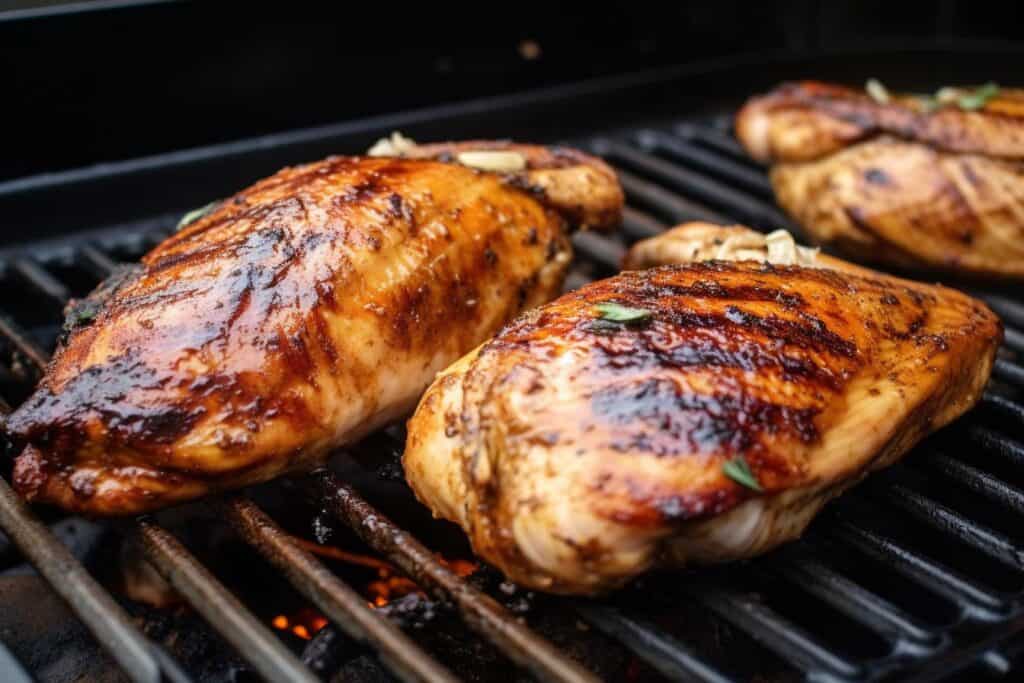
Cooking bone-in chicken breasts on the BBQ requires attention to detail to get the timing just right. Here are the key factors that affect cooking time:
- Size and Thickness: Thicker chicken breasts take longer to cook. Aim for pieces about 1 to 1.5 inches thick.
- Grill Temperature: Keep your grill at medium-high heat, around 375°F to 450°F (190°C to 230°C), for even cooking.
- Bone-In Factor: Bones slow down the cooking process, so bone-in chicken breasts will need about 10-15 minutes longer than boneless ones.
- Grill Type: Gas grills offer precise temperature control, while charcoal grills may require more effort to maintain steady heat.
- Heat Method: Use direct heat to sear the chicken and then move it to indirect heat to finish cooking without drying it out.
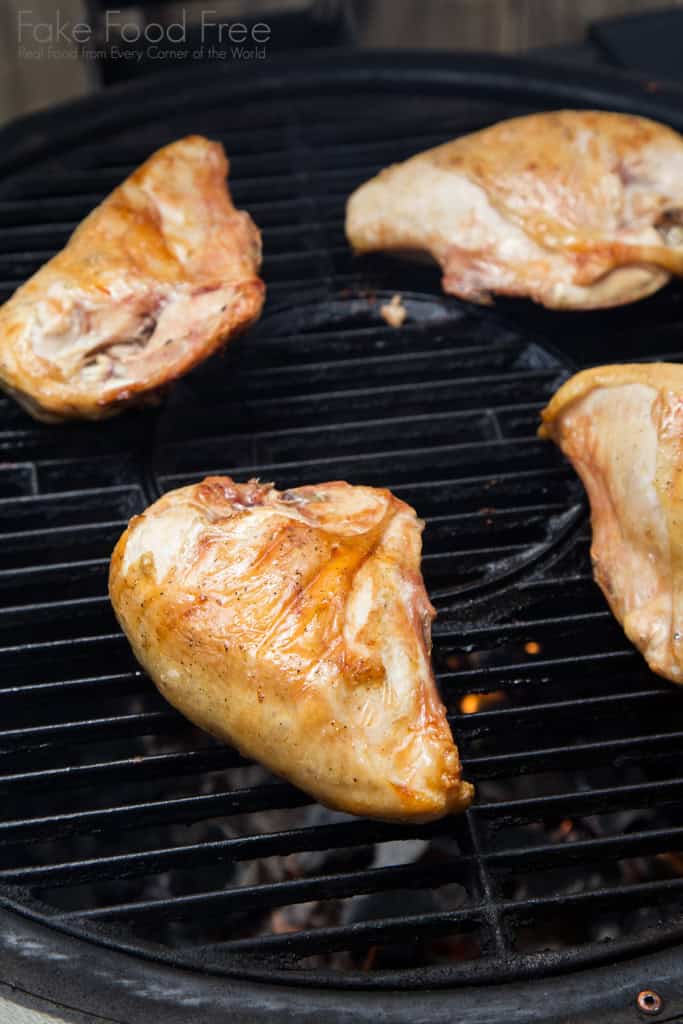
Given these factors, bone-in chicken breasts typically take about 30-40 minutes to cook, flipping halfway through. Always use a meat thermometer to ensure the internal temperature reaches 165°F (74°C) for safety.
Understanding Cooking Times
When barbecuing bone-in chicken breasts, understanding the various cooking times is essential to achieving that perfect balance of juicy and flavorful meat. Different factors come into play, each influencing how long you’ll need to keep your chicken on the grill.
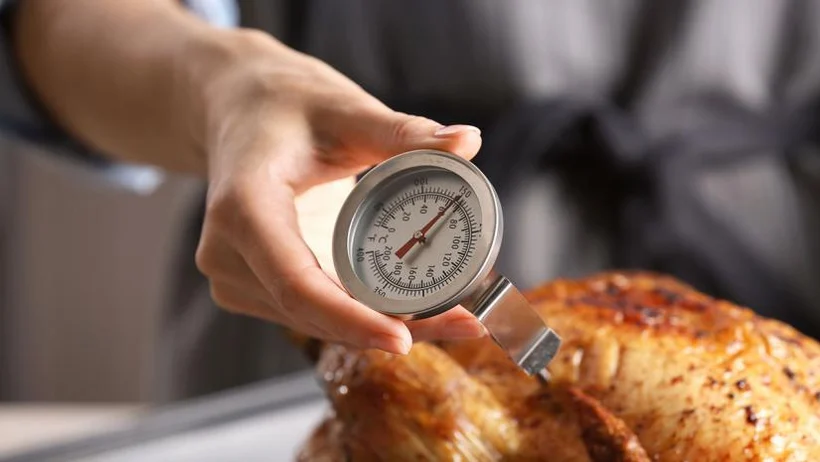
- Size and Thickness: The size and thickness of your chicken breasts are primary determinants of cooking time. Thicker breasts, around 1 to 1.5 inches, require longer cooking times, usually around 30-40 minutes. Thinner pieces will cook more quickly.
- Marinade: Marinating chicken can add a burst of flavor and help tenderize the meat, but it also affects cooking time. If your marinade contains sugar or honey, it can cause the chicken to caramelize quickly, potentially leading to burning if not monitored closely. Adjust your cooking time accordingly, and consider cooking at a slightly lower temperature if using a sugary marinade.
- BBQ Temperature: Maintaining the right grill temperature is crucial. For bone-in chicken breasts, medium-high heat (375°F to 450°F or 190°C to 230°C) is ideal. This range ensures the chicken cooks evenly without drying out.
Factors Affecting Cooking Time
Thickness
Thicker chicken breasts take longer to cook. If you’re working with a thicker cut, expect to extend your cooking time by 5-10 minutes. Conversely, thinner cuts will be ready faster.
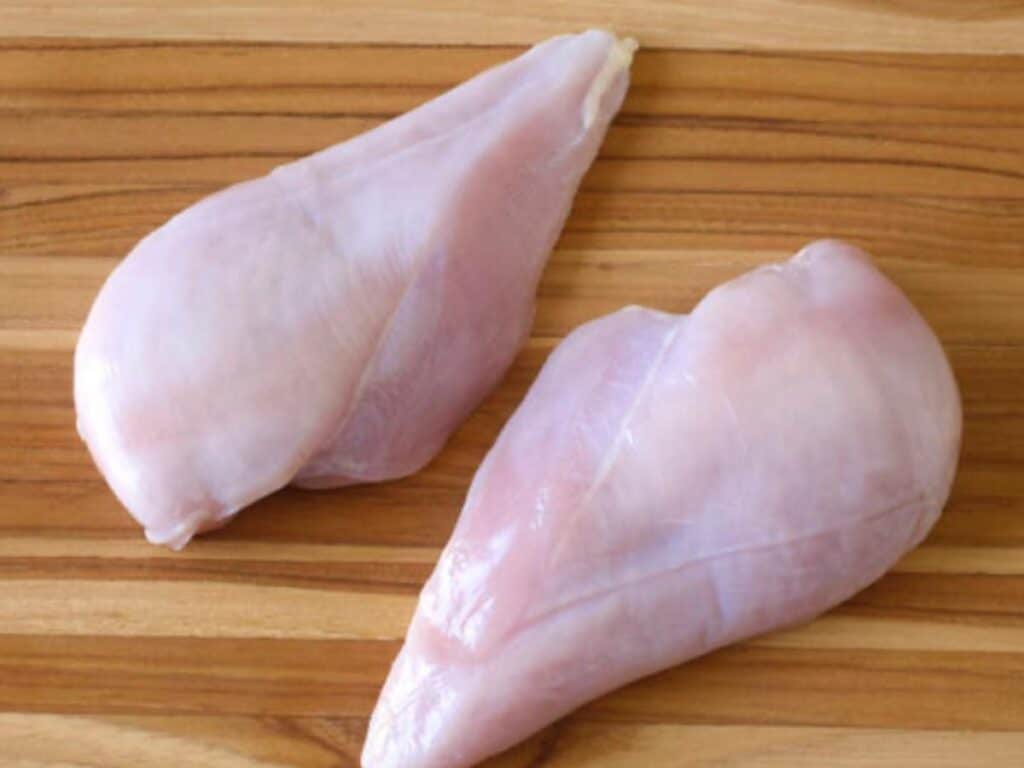
Bone-In vs. Boneless
Bone-in chicken breasts cook more slowly than boneless due to the bone’s insulating properties. Plan for an additional 10-15 minutes of cooking time for bone-in pieces.
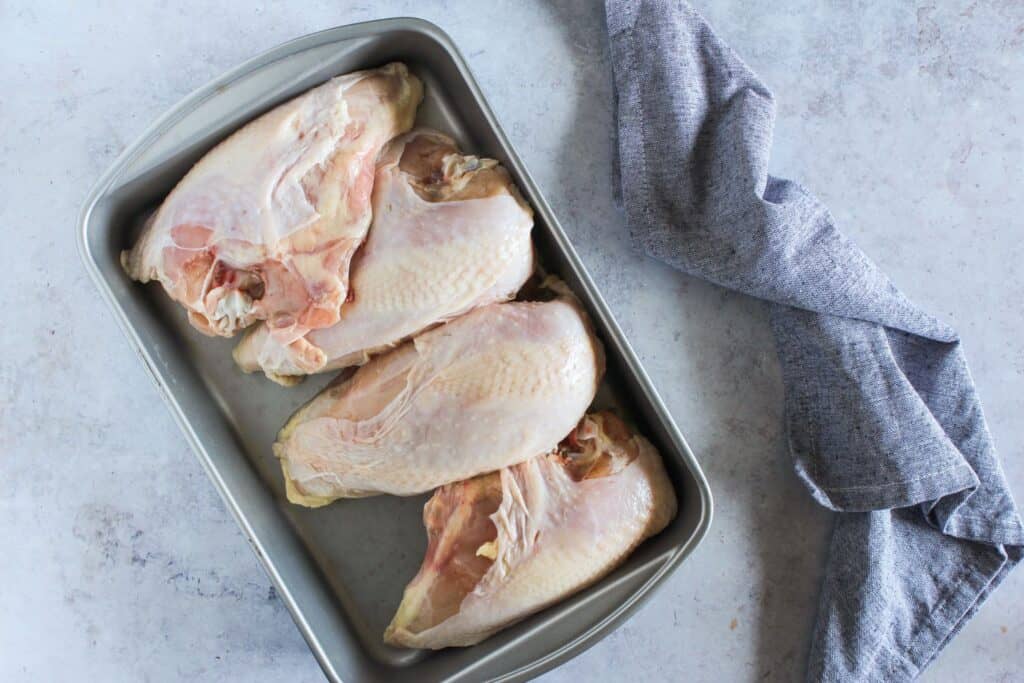

Marination
Marinated chicken might cook slightly faster or slower depending on the ingredients. Acidic marinades (like those with lemon juice or vinegar) can begin to “cook” the chicken before it hits the grill, shortening the required grilling time. However, marinades with a lot of sugar can cause quicker browning, requiring careful attention to avoid burning.
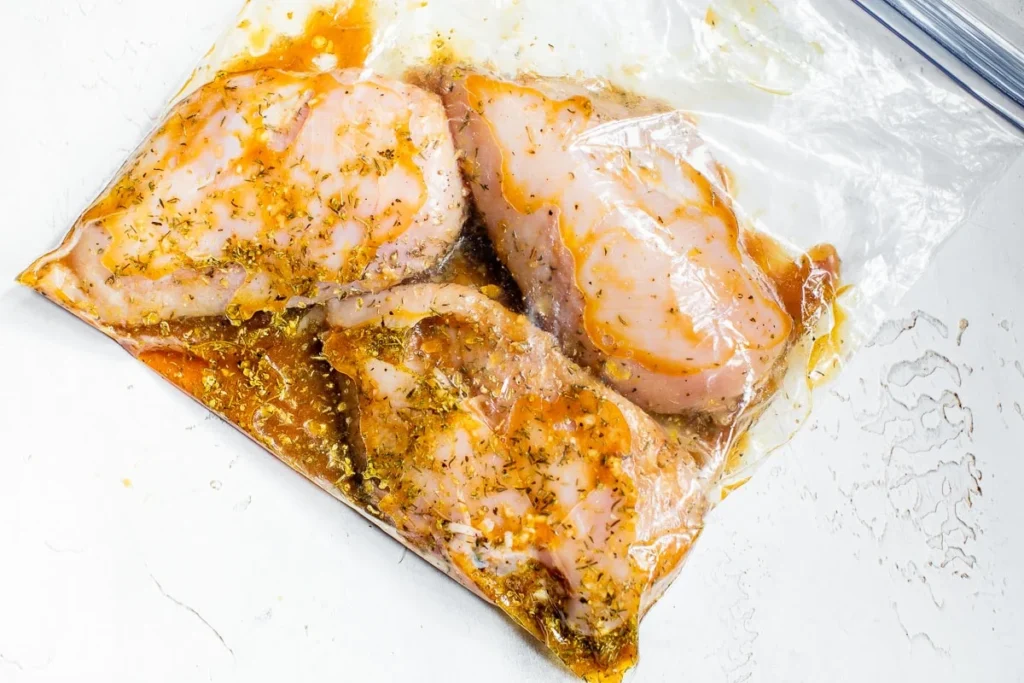
Preparation Techniques
Getting your chicken breasts ready for the BBQ is crucial for ensuring they turn out flavorful and juicy. Here’s a step-by-step guide to preparing bone-in chicken breasts for the grill:
- Step 1: Choose Your Chicken
- Select bone-in chicken breasts that are fresh and of similar size for even cooking.
- Step 2: Clean and Pat Dry
- Rinse the chicken breasts under cold water and pat them dry with paper towels. Removing excess moisture helps the marinade adhere better and ensures a good sear.
- Step 3: Marinate the Chicken
- Place the chicken in a resealable plastic bag or a shallow dish. Pour your marinade over the chicken, ensuring each piece is well-coated. Seal the bag or cover the dish, and refrigerate for at least 30 minutes to 2 hours. For deeper flavor, marinate overnight.
- Step 4: Season Generously
- If you’re not marinating, season your chicken breasts with salt, pepper, and any other desired spices. A simple rub with olive oil, garlic powder, paprika, and a touch of cayenne pepper works wonders.
- Step 5: Preheat the Grill
- Preheat your grill to medium-high heat, around 375°F to 450°F (190°C to 230°C). This ensures your chicken cooks evenly and develops a nice char.
- Step 6: Prepare for Grilling
- Brush the grill grates with oil to prevent sticking. Place the chicken breasts on the grill, skin-side down if applicable, and close the lid.
Best Marinades for BBQ Chicken
Marinating your chicken not only adds flavor but also helps to tenderize the meat. Here are some tried-and-true marinades that will elevate your BBQ chicken:
Classic Lemon-Herb Marinade
- Ingredients: Juice of 2 lemons, 1/4 cup olive oil, 4 cloves garlic (minced), 2 tbsp chopped fresh rosemary, 1 tbsp chopped fresh thyme, salt, and pepper.
- Instructions: Combine all ingredients in a bowl. Pour over chicken and marinate for at least 1 hour or overnight for best results.
Spicy Honey Mustard Marinade
- Ingredients: 1/4 cup Dijon mustard, 1/4 cup honey, 2 tbsp apple cider vinegar, 2 cloves garlic (minced), 1 tsp smoked paprika, 1/2 tsp cayenne pepper, salt, and pepper.
- Instructions: Mix all ingredients until well combined. Marinate chicken for at least 30 minutes.
Soy-Ginger Marinade
- Ingredients: 1/4 cup soy sauce, 2 tbsp sesame oil, 3 tbsp honey, 3 cloves garlic (minced), 1 tbsp grated fresh ginger, 1 tbsp rice vinegar.
- Instructions: Whisk together all ingredients. Marinate the chicken for 1-2 hours for maximum flavor.
Safety Tips and Temperature Guidelines
- Internal Temperature: Ensure chicken reaches 165°F (74°C) internally.
- Measuring Temperature: Use a meat thermometer in the thickest part, avoiding the bone.
- Monitor Progress: Check temperature halfway through cooking and before removing from grill.
- Avoid Common Mistakes: Maintain consistent grill temperature to prevent undercooking or over-charring.
- Resting Time: Let chicken rest for a few minutes after grilling to redistribute juices.
How to Use a Meat Thermometer
Using a meat thermometer ensures your chicken is both safe to eat and perfectly cooked. Here’s how to do it right:
- Insert the Thermometer: Insert the probe into the thickest part of the chicken breast, avoiding bones, as they can give false readings.
- Check During Cooking: About halfway through the cooking process, check the temperature to monitor progress.
- Final Check: Just before you think the chicken is done, check again. The internal temperature should reach 165°F (74°C).
- Rest the Chicken: Once the desired temperature is achieved, remove the chicken from the grill and let it rest for a few minutes. This helps the juices redistribute for a juicier bite.

Common Mistakes and How to Avoid Them
Grilling chicken can be tricky, and common mistakes can ruin your meal. Here’s how to avoid them:

- High Heat: Cooking on too high heat can burn the outside while leaving the inside raw. Use medium-high heat for even cooking.
- Not Preheating the Grill: Always preheat your grill to ensure consistent temperature.
- Flipping Too Often: Constant flipping can cause uneven cooking. Flip the chicken only once, halfway through.
- Skipping the Thermometer: Guessing the doneness can lead to undercooked chicken. Always use a meat thermometer to ensure it reaches 165°F (74°C).
- Skipping Rest Time: Cutting the chicken immediately after grilling lets juices escape. Let it rest for a few minutes to keep it juicy.
Overcooking and Undercooking
Getting chicken just right on the BBQ can be a challenge. Here are signs of overcooked and undercooked chicken and tips to achieve perfect doneness:
Signs of Overcooked Chicken
- Dry Texture: Overcooked chicken will be dry and tough, lacking juiciness.
- Chewy Meat: It can become chewy and hard to swallow.
- Burnt Exterior: If the outside is charred before the inside is cooked, the chicken is likely overdone.
Signs of Undercooked Chicken
- Pink or Red Interior: If the chicken is still pink or has red juices, it’s undercooked.
- Soft Texture: Undercooked chicken will feel soft and slightly jiggly.
- Low Temperature: If the internal temperature is below 165°F (74°C), it needs more time on the grill.
Tips for Perfect Chicken
- Use a Meat Thermometer: Check that the internal temperature reaches 165°F (74°C).
- Consistent Heat: Maintain medium-high heat (375°F to 450°F or 190°C to 230°C) for even cooking.
- Proper Rest Time: Let the chicken rest after grilling to allow juices to redistribute, ensuring a juicy bite.
Serving Suggestions
Elevate your BBQ chicken breast with bone by pairing it with these creative side dishes and presentation tips:
Presentation Tip
Arrange chicken on a platter with a sprinkle of fresh herbs and lemon wedges for a vibrant, appetizing look.
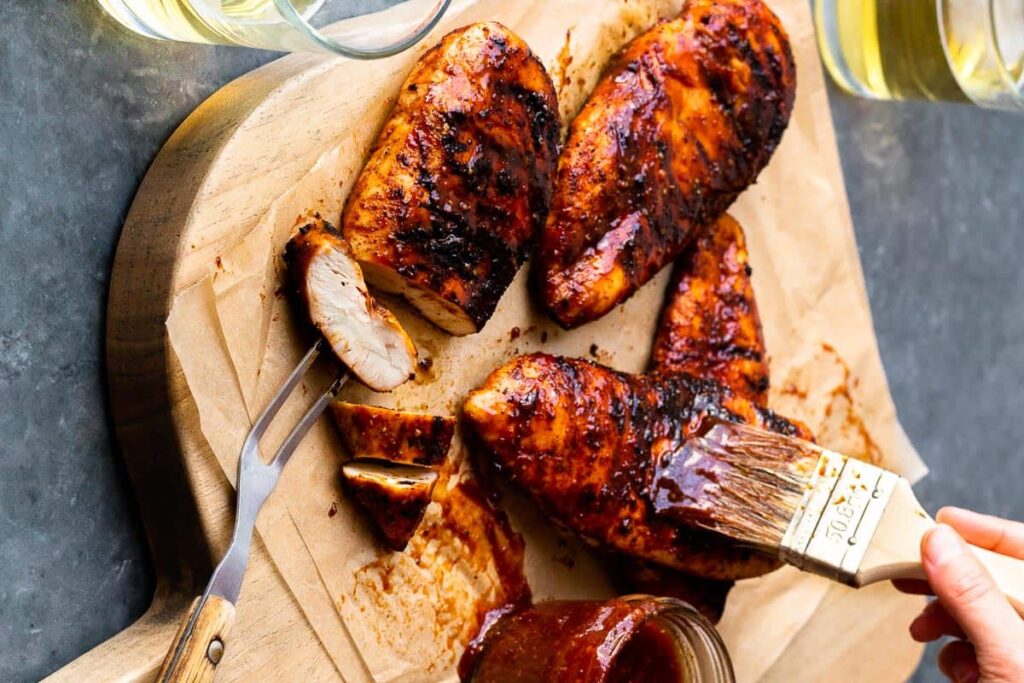
Pairing with Sides
Choosing the right sides can elevate your BBQ chicken breast to a complete and satisfying meal. Here are some of the best side dishes to complement the flavors of BBQ chicken:
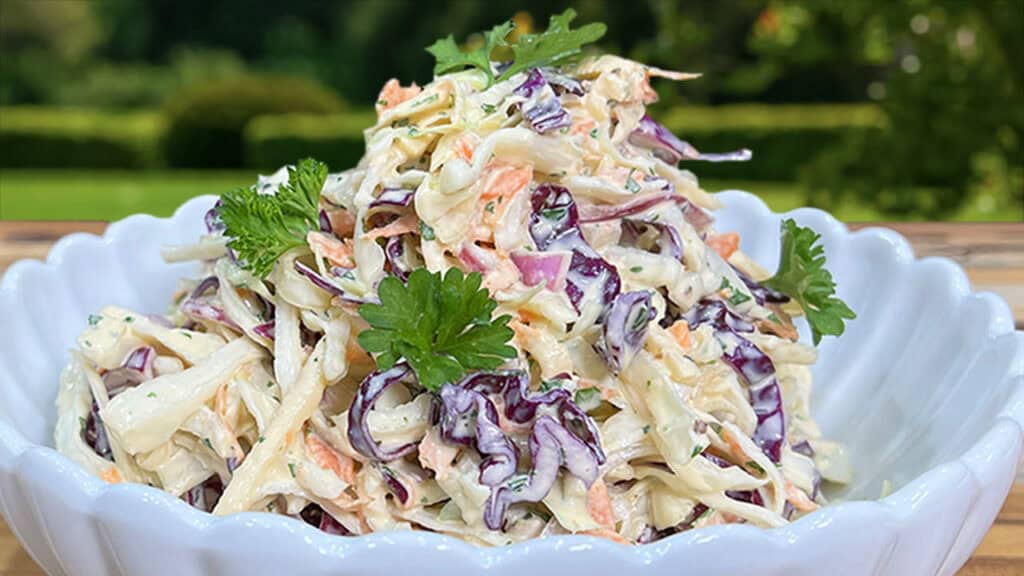
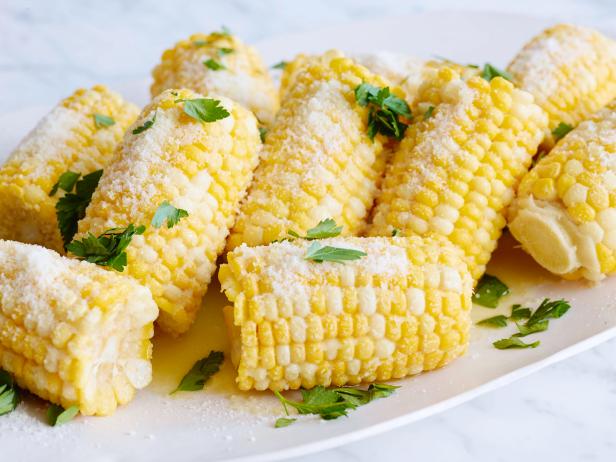

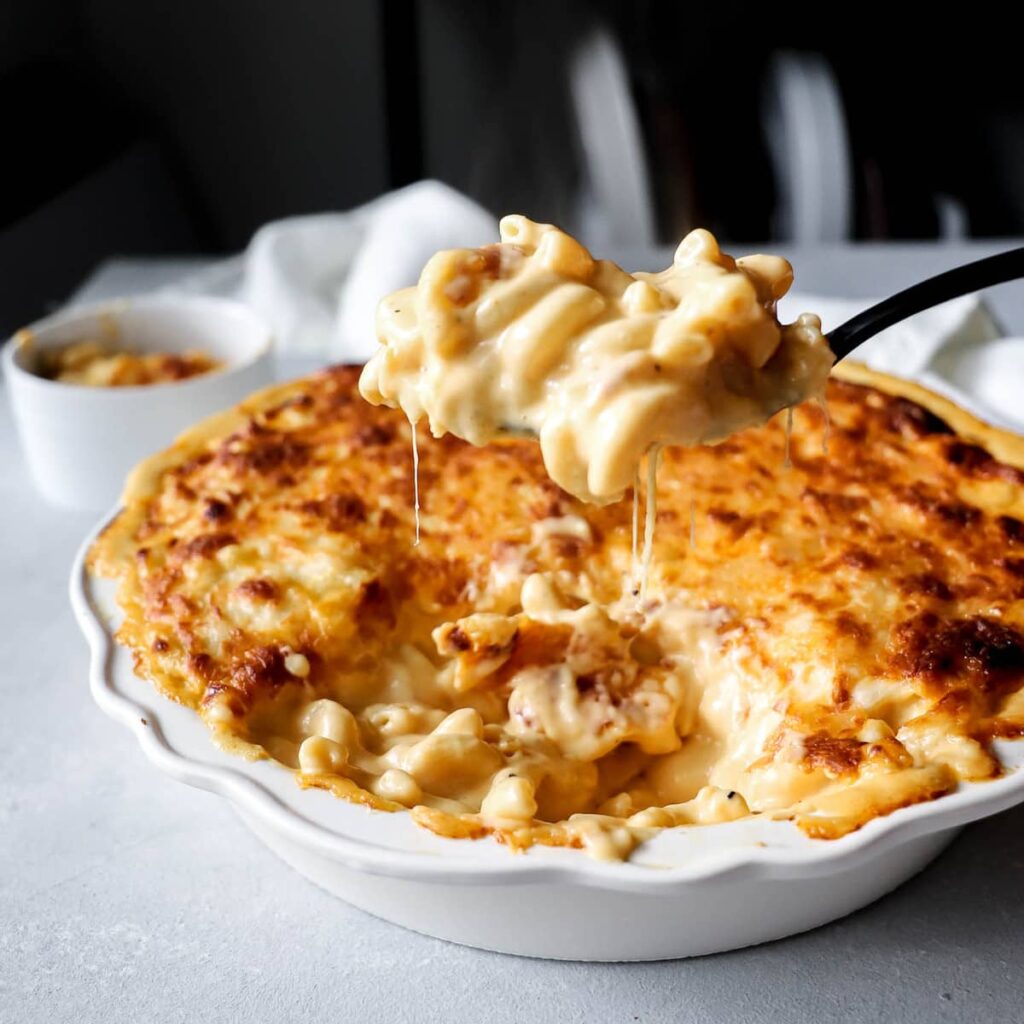
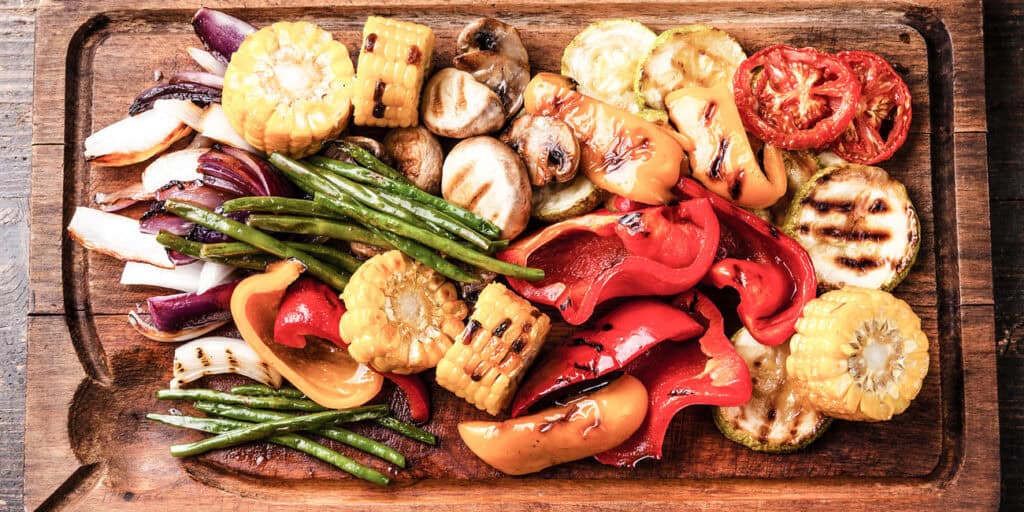
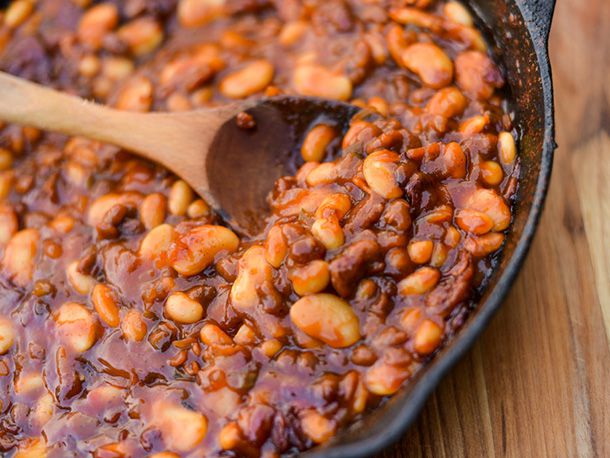
- Classic Coleslaw A crunchy, tangy coleslaw provides a refreshing contrast to the smoky, rich flavors of BBQ chicken.
- Grilled Vegetables Bell peppers, zucchini, onions, and asparagus are perfect for grilling alongside your chicken. They add a healthy and colorful touch to your plate.
- Corn on the Cob Grilled corn, slathered with butter and sprinkled with a bit of salt and pepper, adds a sweet and savory element to your meal.
- Potato Salad mA creamy potato salad, with a hint of mustard or dill, pairs wonderfully with the savory BBQ flavors.
- Garlic Bread Warm, buttery garlic bread is a comforting side that complements the chicken’s smoky taste.
- Hawaiian Twist A light, pineapple salad with a simple dressing offers a refreshing bite and balances the meal’s richness. And if you’re craving for a tropical flavor you might want to try our Hawaiian BBQ chicken recipe
Disclosure: Our blog contains affiliate links to products. We may receive a commission for purchases made through these links. However, this does not impact our reviews and comparisons. We try our best to keep things fair and balanced, in order to help you make the best choice for you.

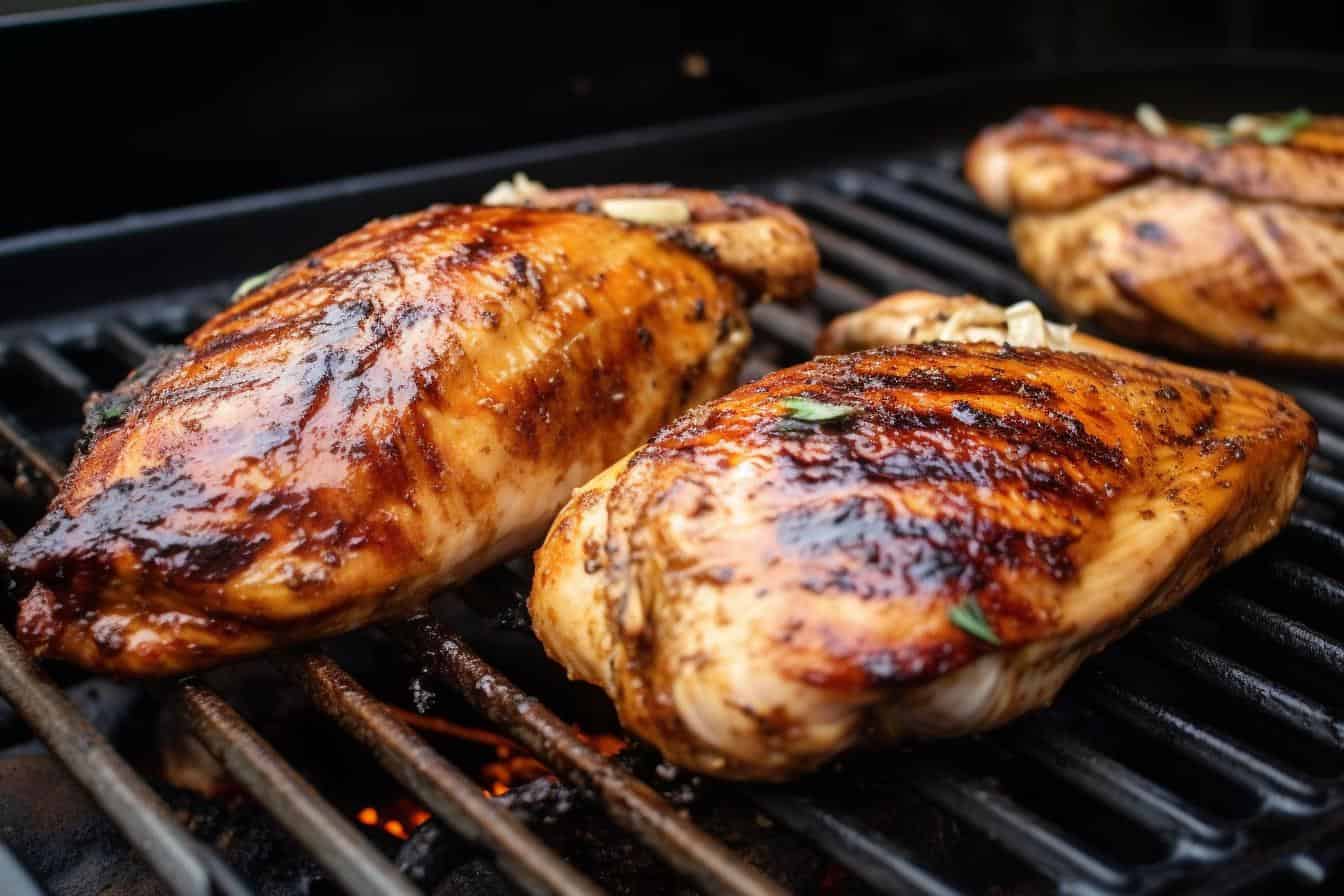
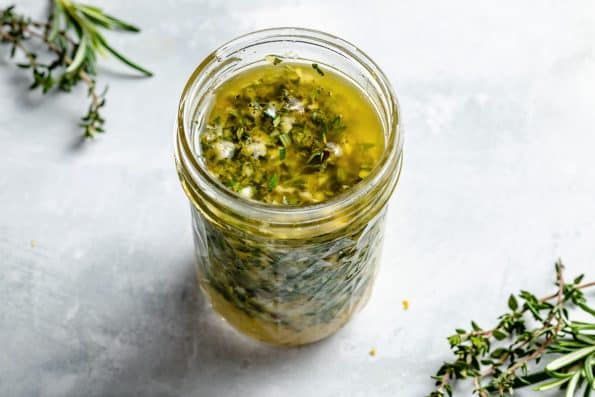
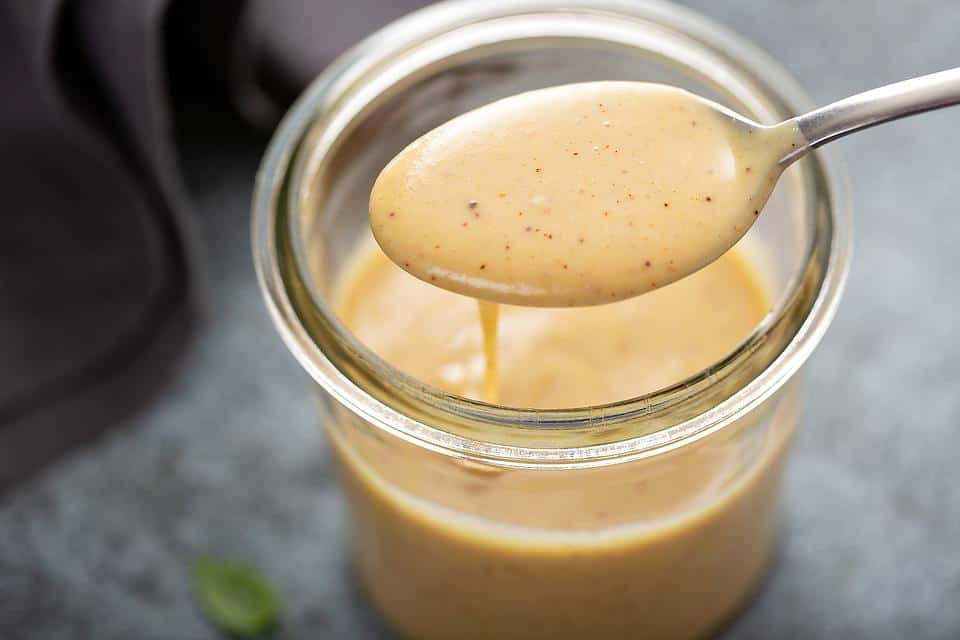
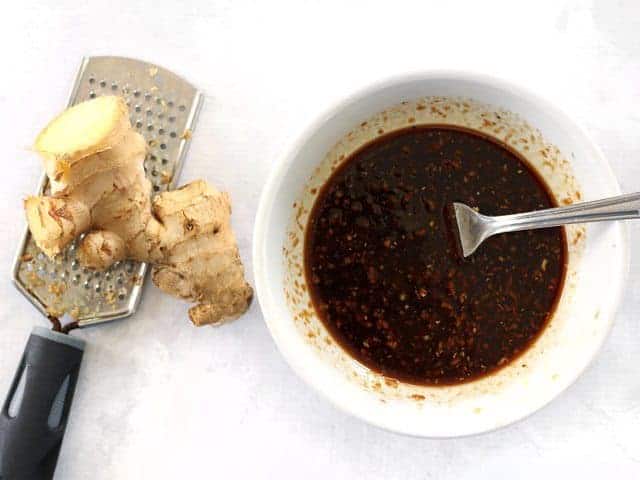

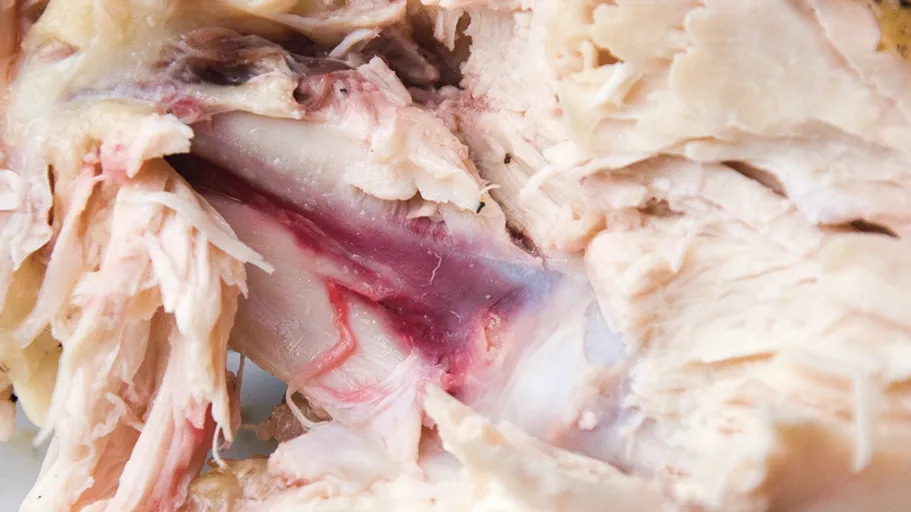
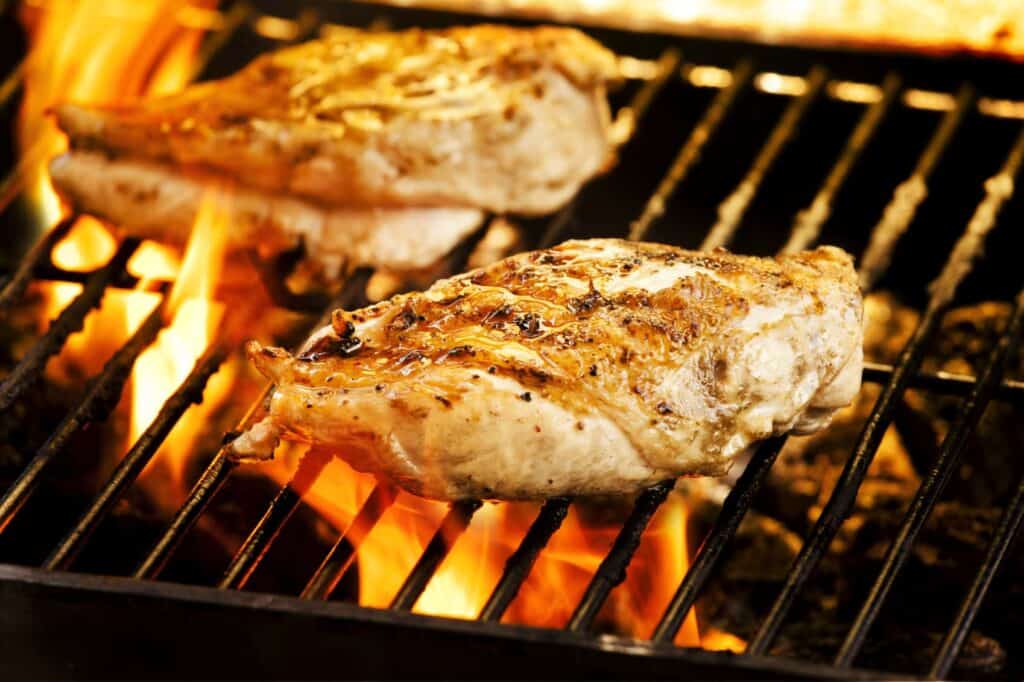
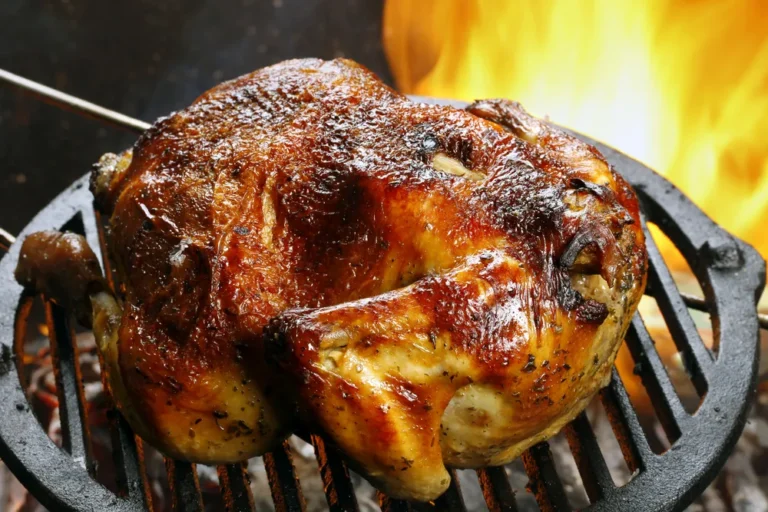
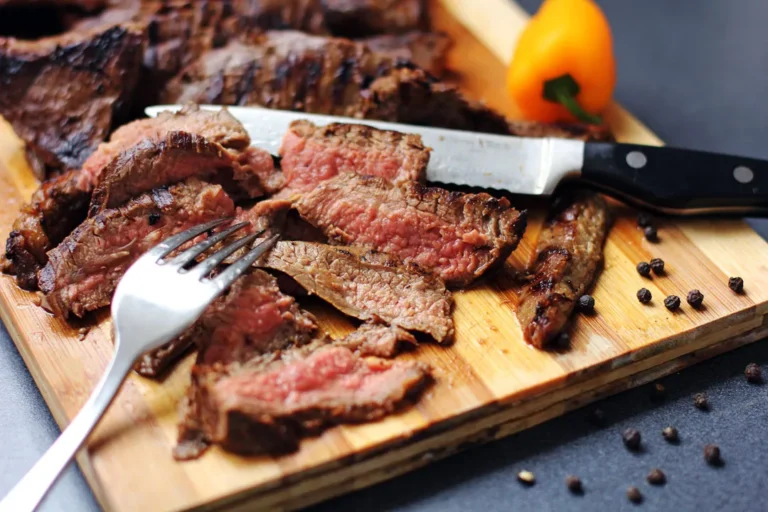
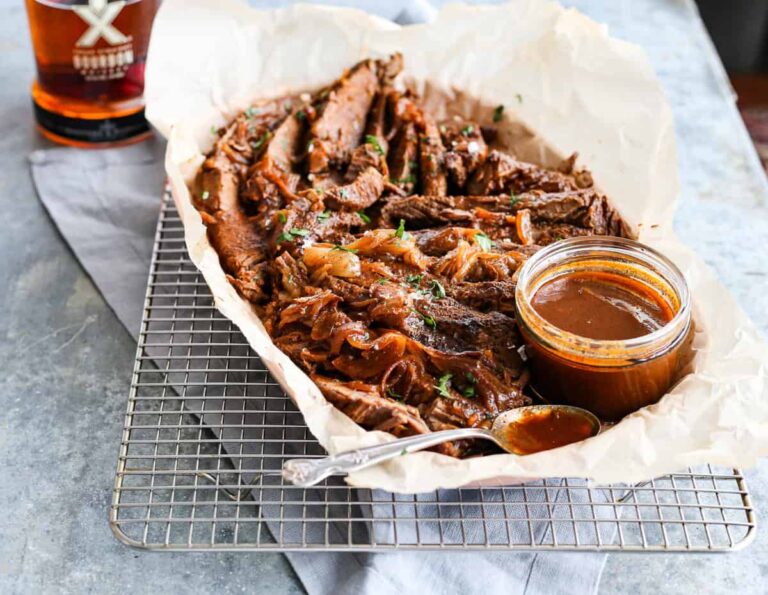
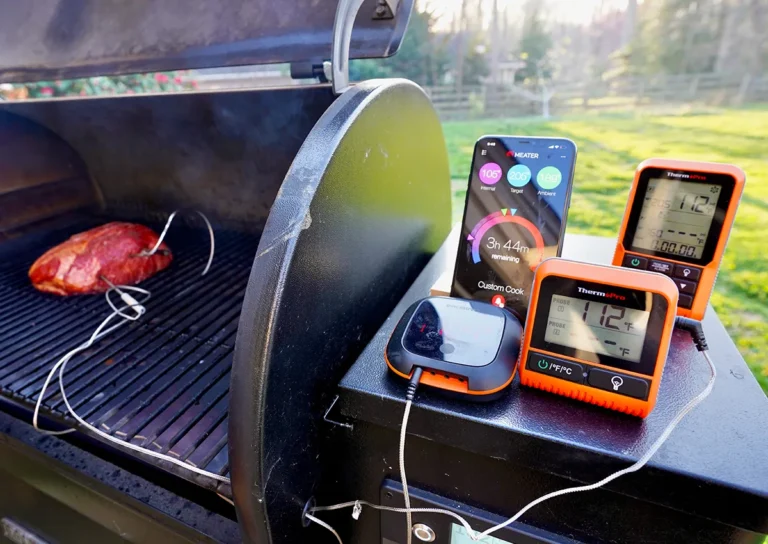
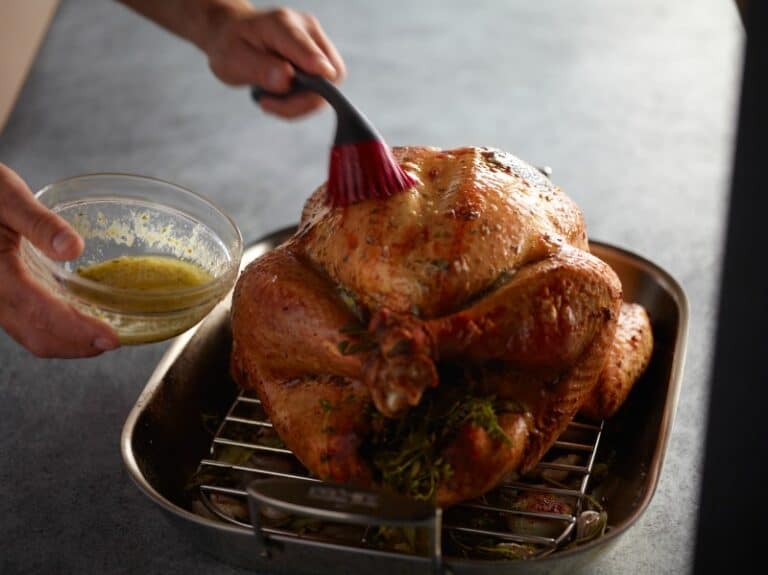

2 Comments